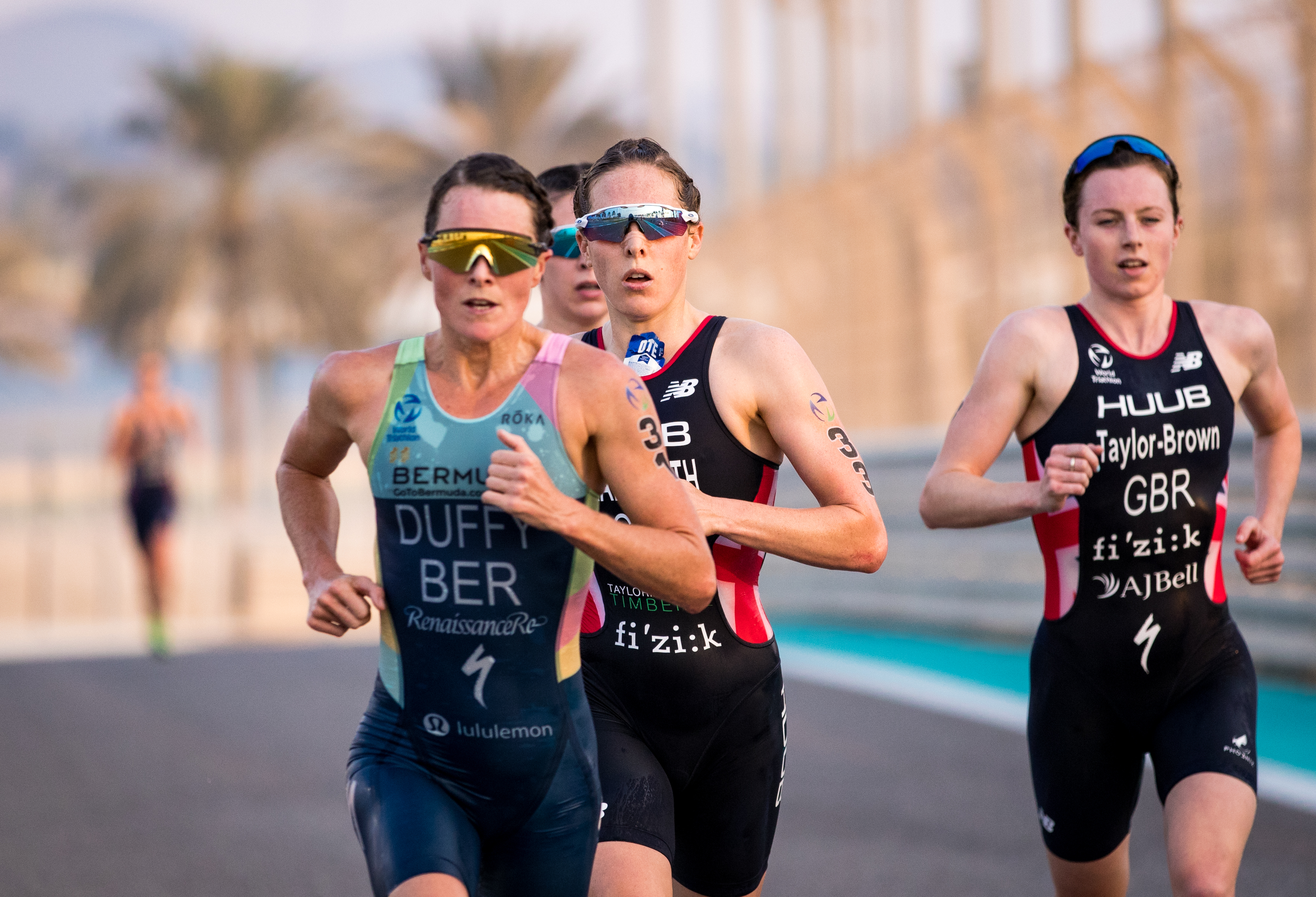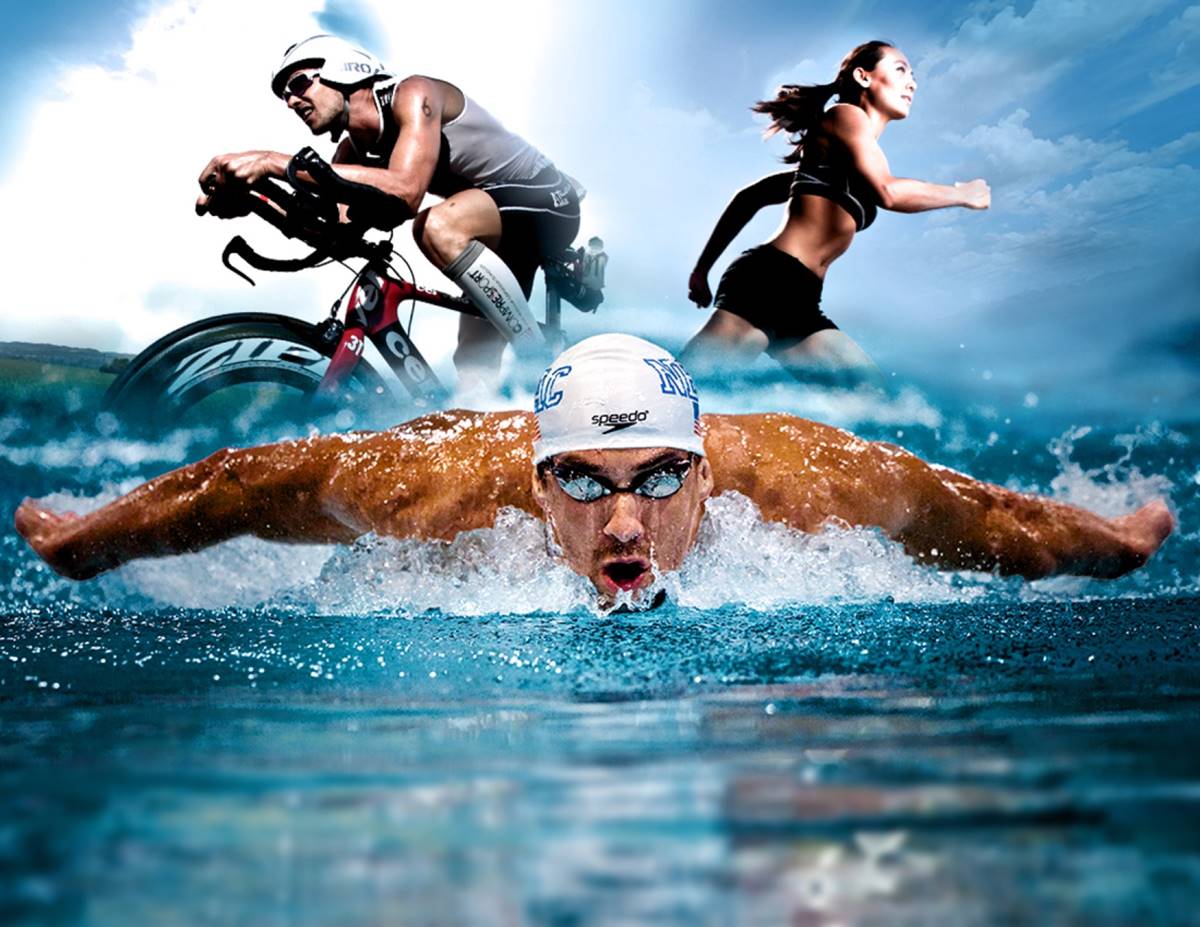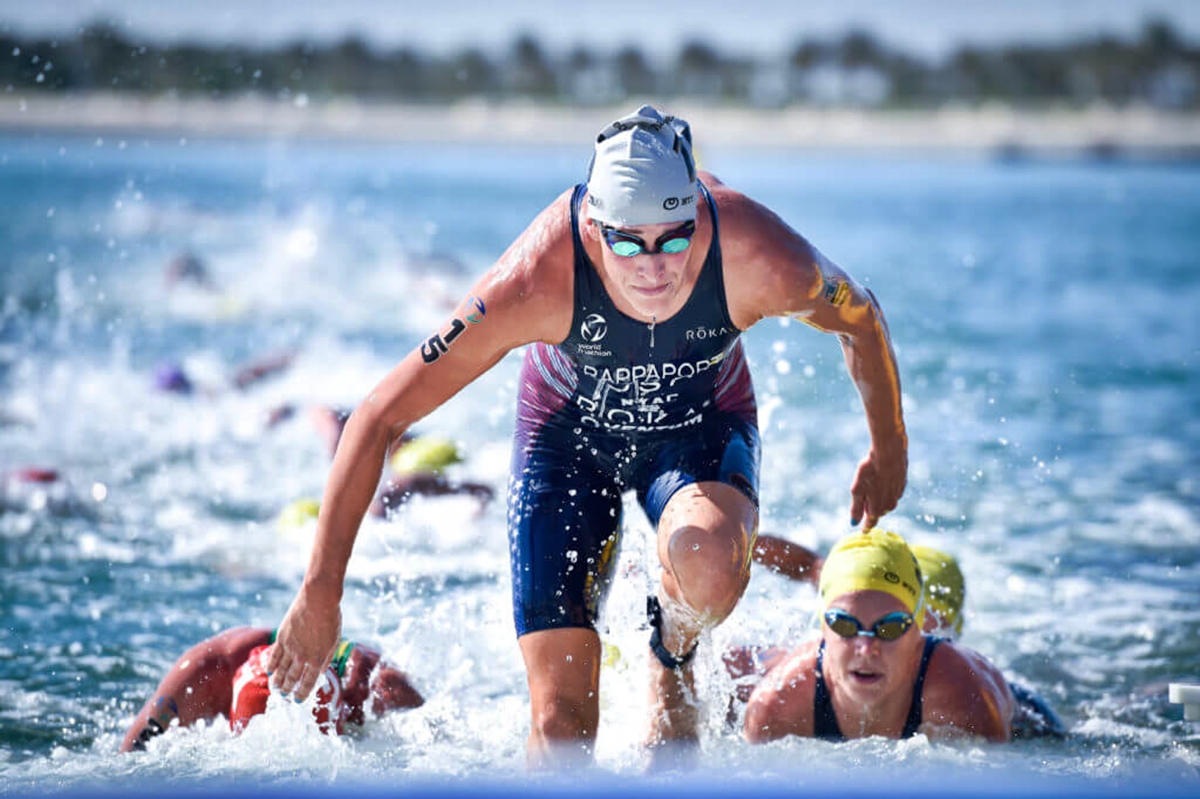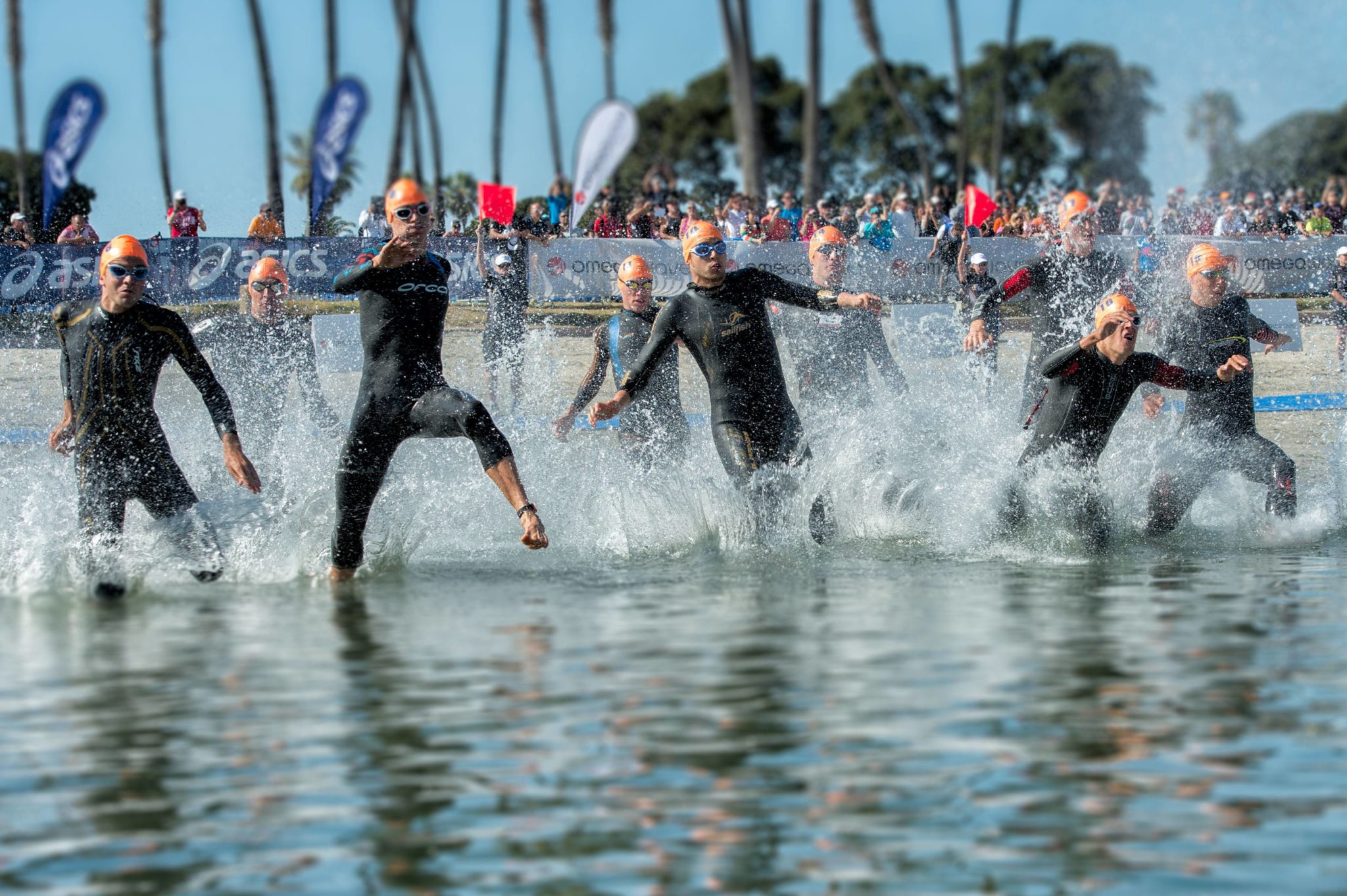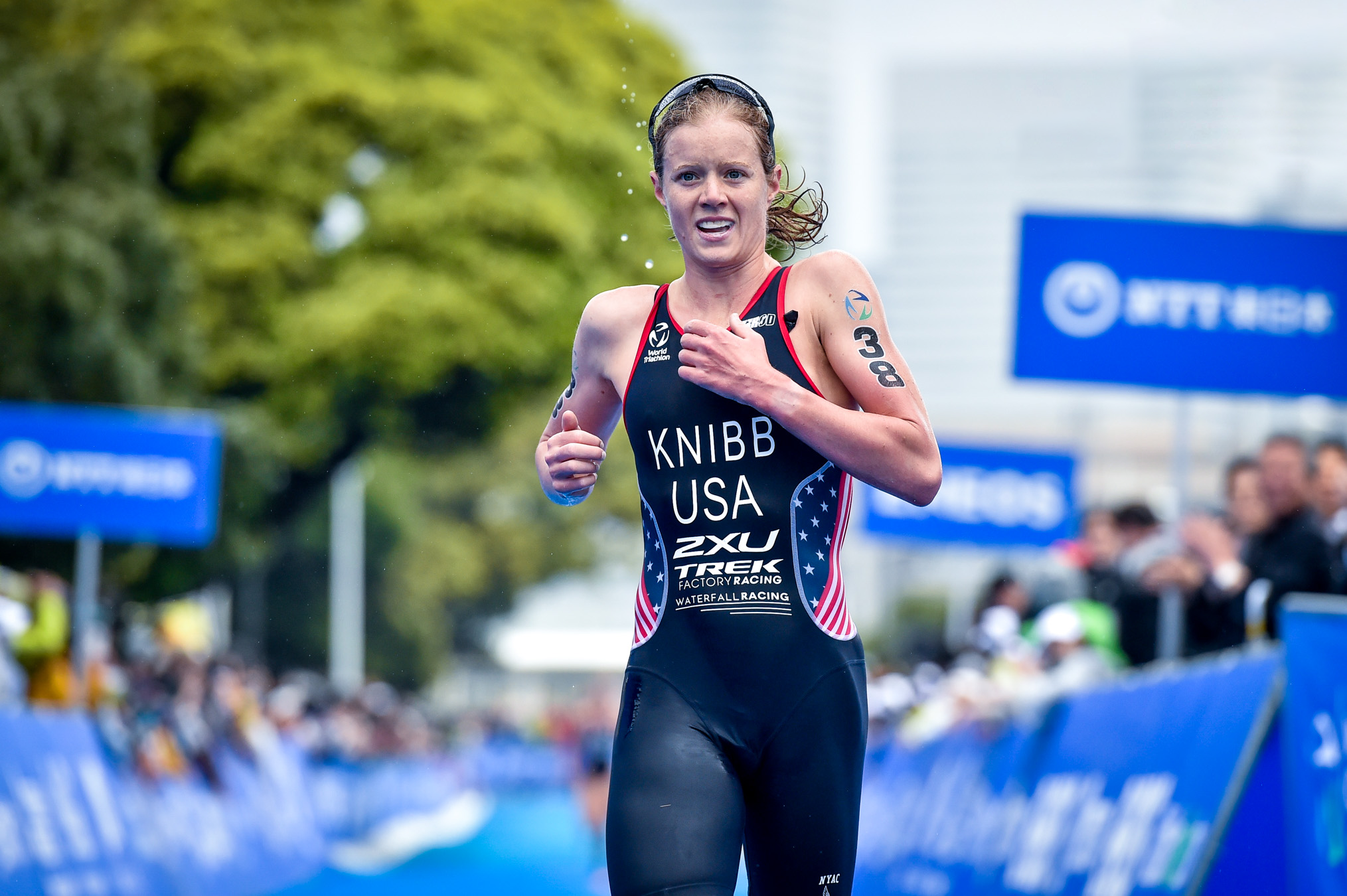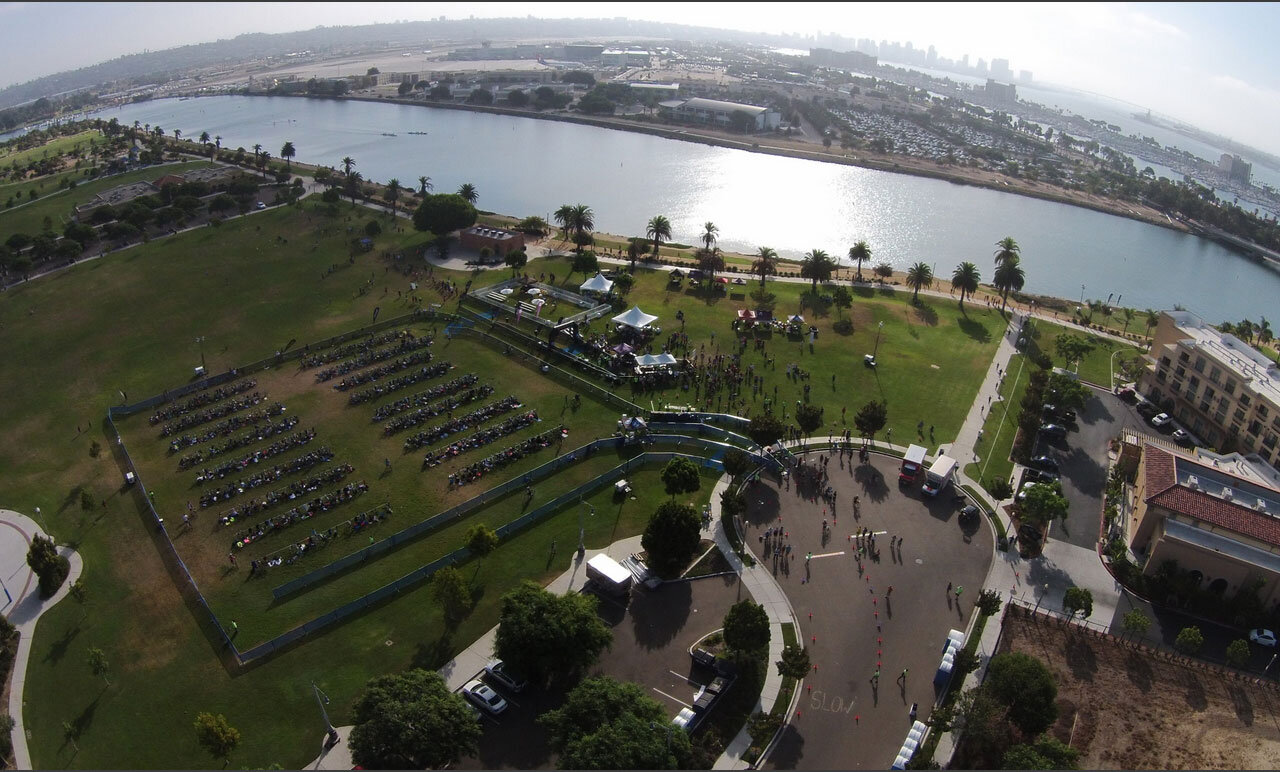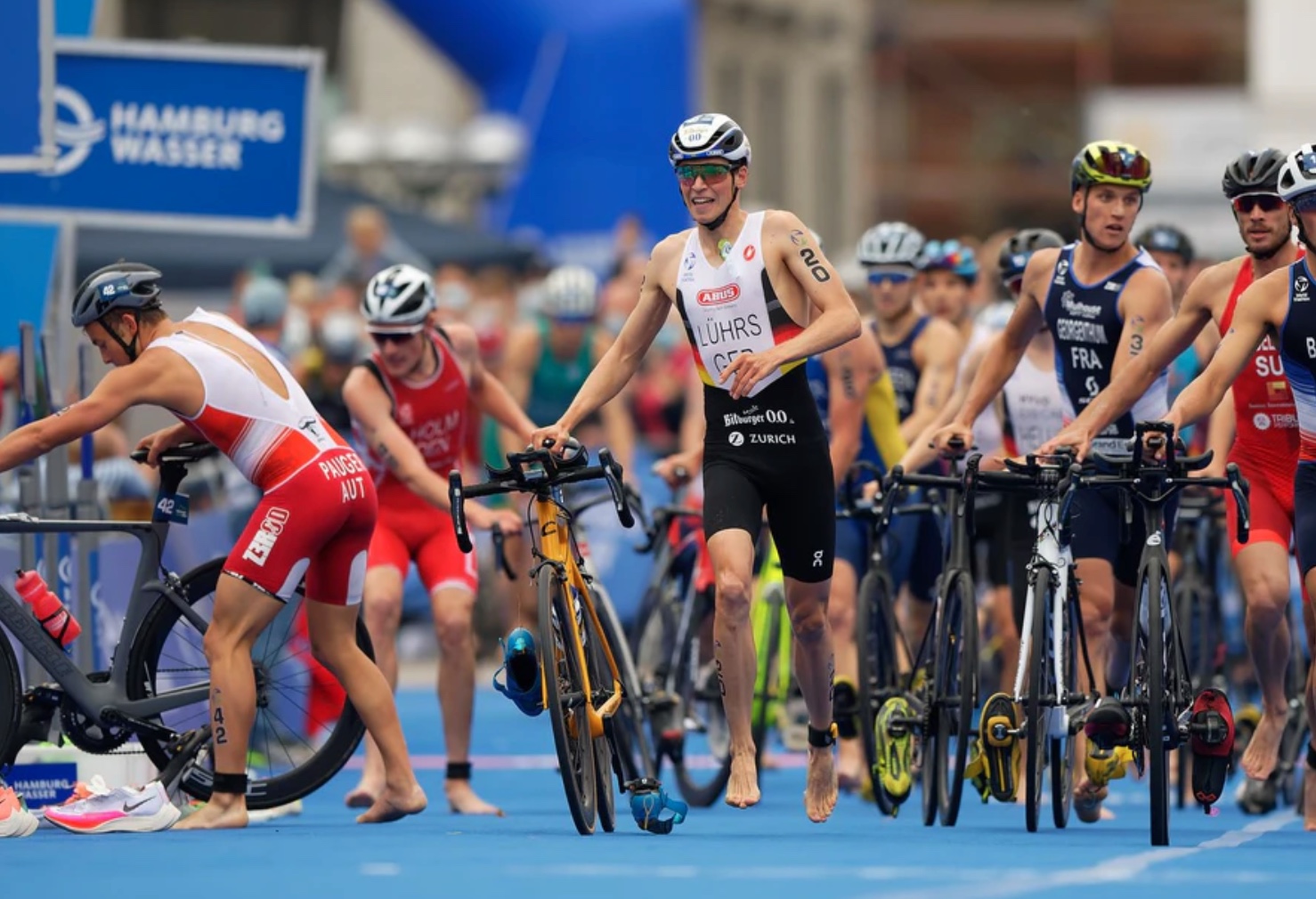

Featured
How Far Is The ITU Triathlon
Modified: January 22, 2024
Discover how far the ITU Triathlon has come as we showcase the featured highlights and achievements of this thrilling endurance sport. Embark on a journey of determination and triumph today!
Introduction
Welcome to the thrilling world of ITU Triathlon, a pinnacle of endurance, athleticism, and determination. Whether you’re an avid triathlon follower or a curious newcomer, this article will dive into the captivating realm of ITU Triathlon and provide you with an in-depth understanding of this exhilarating sport.
ITU Triathlon, also known as International Triathlon Union Triathlon, is a highly competitive and globally recognized form of the multi-sport discipline. Combining swimming, cycling, and running, ITU Triathlon pushes athletes to their physical and mental limits as they strive to conquer various courses and claim victory.
ITU Triathlon was founded in 1989 as the international governing body for the sport. Since its inception, it has gained immense popularity and has become a platform for elite athletes to showcase their skills on a global stage. The sport has also attracted a dedicated following of fans, drawn to the intensity, excitement, and unpredictable outcomes that ITU Triathlon offers.
What sets ITU Triathlon apart from other forms of triathlon is its standardized race format, rules, and regulations. This ensures a level playing field for all athletes and allows for fair competition. The races are meticulously organized and adhere to strict guidelines that provide consistency across events, making it easier for fans and athletes alike to follow and understand the sport.
ITU Triathlon features various race distances, from the shorter sprint races to the more challenging Olympic-distance events. These distances not only test athletes’ speed and endurance but also require strategic thinking and adaptability as they navigate through different stages of the race. Each leg of the race presents its own set of challenges, making ITU Triathlon a true test of overall athleticism.
This article will delve into the history of ITU Triathlon, explore the different race distances, highlight the achievements of elite athletes, and explain the qualification process for both professionals and age-group athletes. We will also delve into the ITU Triathlon World Series, the pinnacle of the ITU calendar, and explore the exciting ITU Triathlon Grand Final and ITU Triathlon Mixed Relay World Championships.
So fasten your seatbelts and get ready to dive into the thrilling world of ITU Triathlon. Whether you are a fan, an aspiring athlete, or simply looking to expand your knowledge of this exciting sport, this article will serve as your ultimate guide to the exhilarating world of ITU Triathlon.
What is ITU Triathlon?
ITU Triathlon, short for International Triathlon Union Triathlon, is a multi-sport event that combines swimming, cycling, and running into one thrilling race. It is a recognized form of triathlon that provides athletes from all over the world with the opportunity to compete at the highest level of the sport.
In ITU Triathlon, athletes must complete three consecutive stages: swimming, cycling, and running. The race begins with the swim leg, where competitors face the challenge of navigating through open water, such as lakes, rivers, or oceans. After completing the swim, they transition to the bike leg, where they race on road or off-road courses using bicycles. Finally, the athletes transition once again to the run leg, where they showcase their endurance and speed on foot.
ITU Triathlon offers various race distances to accommodate athletes of different skill levels and abilities. The most common race distances include:
- Sprint distance: Typically consisting of a 750-meter swim, a 20-kilometer bike ride, and a 5-kilometer run, the sprint distance is a great starting point for beginners and offers a fast-paced, action-packed race.
- Olympic distance: As the name suggests, this race distance mirrors the triathlon event in the Olympic Games. It usually features a 1.5-kilometer swim, a 40-kilometer bike ride, and a 10-kilometer run. Olympic-distance races require a higher level of endurance and are popular among more experienced triathletes.
- Long distance: With longer distances comes a greater test of endurance. Long-distance races vary in length but often feature a 1.9-kilometer swim, a 90-kilometer bike ride, and a 21.1-kilometer run (also known as a half marathon).
- ITU Triathlon World Series and Grand Final: The pinnacle of ITU Triathlon is the ITU Triathlon World Series, which consists of multiple races held around the world throughout the year. The season culminates in the ITU Triathlon Grand Final, where the best athletes compete for the coveted world titles.
ITU Triathlon not only provides a platform for elite athletes to showcase their skills but also offers opportunities for age-group athletes to compete against their peers in various age categories. This inclusivity contributes to the popularity and appeal of ITU Triathlon, making it a sport that is accessible to athletes of all backgrounds and abilities.
Now that you have a solid understanding of what ITU Triathlon entails, let’s delve into the fascinating history of this exhilarating sport and discover how it has evolved over the years.
History of ITU Triathlon
The history of ITU Triathlon dates back to 1989 when the International Triathlon Union (ITU) was established as the governing body for the sport. The ITU was founded with the vision of creating a standardized and globally recognized platform for triathlon competitions.
Prior to the formation of ITU, triathlons were organized independently by various countries and regions, with no unified rules or regulations. The need for a governing body became evident as the sport gained popularity and international participation increased. The ITU was formed to provide structure, consistency, and fairness to triathlon events.
ITU Triathlon made its Olympic debut at the Sydney 2000 Olympic Games, marking a significant milestone for the sport. This acknowledgement by the International Olympic Committee (IOC) helped elevate triathlon’s status and brought it to the attention of a worldwide audience.
Over the years, ITU Triathlon has witnessed remarkable growth and development. The ITU World Cup series was introduced in 1991, providing athletes with more opportunities to compete internationally. The series expanded over time, with races held in different countries around the world, offering top-level competition to triathletes across multiple continents.
In addition to the World Cup series, ITU introduced the World Triathlon Series (WTS) in 2009. The WTS consists of a number of elite races held throughout the year, culminating in the ITU Triathlon Grand Final. The Grand Final serves as the season-ending event where the world’s best triathletes compete for the title of ITU World Champion.
ITU Triathlon has continued to evolve and innovate, introducing new race formats and categories. One such format is the Mixed Relay, where teams of two men and two women compete in a relay-style race. This exhilarating race format has gained popularity and has been included in major ITU events, including the ITU Triathlon Mixed Relay World Championships.
The ITU Triathlon Mixed Relay World Championships, which began in 2009, showcases the exciting team dynamic of the sport. Teams from different nations battle it out on a thrilling course, with each member completing a shortened version of the swim, bike, and run legs before tagging their teammate.
The history of ITU Triathlon is a testament to the passion, dedication, and growth of the sport. It has provided a platform for athletes to showcase their skills, brought the sport to the global stage, and fostered a sense of unity and camaraderie among athletes from different countries.
Now that we’ve explored the history of ITU Triathlon, let’s dive into the various race distances that athletes compete in and the challenges they face in each stage of the race.
Distances in ITU Triathlon
ITU Triathlon offers various race distances that cater to athletes of different abilities and preferences. Each distance presents its own unique set of challenges, testing athletes’ speed, endurance, and tactical skills. Let’s explore the different distances in ITU Triathlon:
- Sprint Distance: The sprint distance is the shortest among the ITU Triathlon race categories. Typically, it involves a 750-meter swim, a 20-kilometer bike ride, and a 5-kilometer run. The sprint distance is known for its fast-paced nature, requiring athletes to push themselves to the limit from start to finish.
- Olympic Distance: Also known as standard distance, the Olympic distance mirrors the triathlon event in the Olympic Games. It covers a 1.5-kilometer swim, a 40-kilometer bike ride, and a 10-kilometer run. The Olympic distance is the most commonly recognized distance in triathlon and demands a balance of speed and endurance.
- Long Distance: As the name suggests, the long-distance category involves longer distances, challenging athletes’ endurance and mental resilience. The specific distances can vary, but it commonly consists of a 1.9-kilometer swim, a 90-kilometer bike ride, and a 21.1-kilometer run, which is a half marathon. Long-distance races require careful pacing and strategic fueling to maintain performance over extended periods.
- ITU Triathlon World Series: The ITU Triathlon World Series consists of races held in various locations around the world. While the distances may vary, they typically fall within the sprint or Olympic distance range. The World Series is an opportunity for elite triathletes to earn valuable ranking points and compete against the best in the sport.
- ITU Triathlon Mixed Relay: The Mixed Relay race is a dynamic and exciting format where teams of two men and two women compete together. Each team member completes a super sprint distance, which usually consists of a 300-meter swim, a 6.6-kilometer bike ride, and a 1.6-kilometer run. The fast and furious nature of the Mixed Relay adds an extra layer of teamwork and strategy to the race, making it a crowd favorite.
The different distances in ITU Triathlon offer a range of challenges for athletes to overcome. The shorter distances demand explosive power and the ability to maintain a high intensity throughout the race, while the longer distances require exceptional endurance and pacing strategies.
It’s important for athletes to tailor their training and race strategies based on the specific distance they are competing in. Sprint distance events may prioritize short, intense workouts, while long-distance preparations will involve longer training sessions to build stamina and aerobic capacity.
Now that we’ve explored the distances in ITU Triathlon, let’s shift our focus to the elite athletes who compete at the highest level of the sport and consistently raise the bar of performance.
Elite Athletes in ITU Triathlon
ITU Triathlon showcases some of the most exceptional athletes in the world of endurance sports. These elite triathletes possess incredible speed, endurance, and mental fortitude, pushing the boundaries of human performance and inspiring others with their achievements. Let’s take a closer look at some of the standout athletes in ITU Triathlon:
- Jan Frodeno: Hailing from Germany, Jan Frodeno is widely regarded as one of the greatest triathletes of all time. He is a double Olympic gold medalist, winning the triathlon event at the Beijing 2008 and Rio 2016 Olympic Games. Frodeno has also clinched multiple ITU World Championship titles and has set numerous course records in long-distance triathlon events.
- Gwen Jorgensen: Gwen Jorgensen, representing the United States, is a dominant force in women’s ITU Triathlon. She won the gold medal at the Rio 2016 Olympic Games, becoming the first American to claim Olympic victory in the sport. Jorgensen has also secured multiple ITU World Championship titles and holds the record for the most consecutive ITU World Triathlon Series wins.
- Alistair Brownlee: Alistair Brownlee, hailing from Great Britain, is known for his remarkable performances in ITU Triathlon. He won the gold medal at the London 2012 and Rio 2016 Olympic Games, showcasing his incredible speed and endurance. Brownlee has been a dominant force in ITU Triathlon, earning multiple ITU World Championship titles and earning a reputation as an incredible all-around triathlete.
- Flora Duffy: Flora Duffy, representing Bermuda, has become a household name in ITU Triathlon. She is a two-time ITU World Champion and has consistently been a force to be reckoned with in the sport. Duffy’s strengths lie in her exceptional cycling and running abilities, often using her bike skills to make decisive moves and secure victories.
- Mario Mola: Hailing from Spain, Mario Mola is a standout performer in ITU Triathlon. He has won multiple ITU World Championship titles and consistently ranks among the top athletes in the sport. Mola excels in all three disciplines, often displaying a strong finishing kick in the run leg to secure victories.
These are just a few examples of the many exceptional athletes who grace the world of ITU Triathlon. They inspire aspiring triathletes around the globe with their dedication, passion, and relentless pursuit of excellence. These elite athletes not only showcase incredible physical abilities but also embody the values of perseverance, sportsmanship, and the relentless pursuit of goals.
As ITU Triathlon continues to evolve and grow, new stars will emerge, pushing the boundaries of what is possible in the sport. The dedication and determination of these elite athletes serve as an inspiration to all triathlon enthusiasts, encouraging them to chase their own goals and strive for greatness.
Now that we’ve highlighted some of the remarkable athletes in ITU Triathlon, let’s explore the qualification process for athletes looking to compete in these prestigious events.
Qualification Process for ITU Triathlon
The qualification process for ITU Triathlon varies depending on the specific event and category. Athletes can compete in either professional or age-group divisions, each with its own set of requirements and pathways to qualify for races. Let’s delve into the qualification process for both professional and age-group athletes:
Professional Athletes:
For professional triathletes, the qualification process for ITU Triathlon World Series and other major events typically involves a combination of ranking and selection criteria. The ITU maintains a ranking system based on athletes’ performance in sanctioned races. The rankings are updated regularly, and athletes accumulate points based on their finishing positions in these races. The top-ranked athletes earn automatic invitations to major events such as the ITU Triathlon World Series and Grand Final.
In addition to the ranking system, national federations may have their own specific selection criteria for allocating spots to their top athletes for international competitions. Federation-selected athletes often need to meet certain performance standards or achieve specific results in designated races to secure a place in major ITU events.
Age-Group Athletes:
Age-group athletes, who compete outside the professional division, have the opportunity to participate in ITU Triathlon events through a combination of qualification races and allocated slots. Age groups are typically categorized based on gender and age brackets, allowing athletes to compete against others in their respective age categories.
To qualify for ITU Triathlon events as an age-group athlete, individuals must first participate in qualifying races. These races can vary depending on the region or country and often require athletes to meet specific time standards or finish within a certain percentage of the top finishers in their age group.
Once athletes have qualified for a spot, they are eligible to represent their country in international competitions. The number of allocated slots for each age group category is determined based on factors such as the size of the athlete pool and the event’s capacity. Allocated slots may be distributed to athletes based on their finishing positions in qualifying races or chosen through a lottery system.
The qualification process for ITU Triathlon emphasizes fair competition and provides opportunities for both professional and age-group athletes to showcase their skills on an international stage. It highlights the importance of consistent performance and encourages athletes to continually strive for excellence in their respective divisions.
Now that we’ve explored the qualification process, let’s turn our attention to the pinnacle of ITU Triathlon competition, the ITU Triathlon World Series.
ITU Triathlon World Series
The ITU Triathlon World Series is the premier annual circuit in ITU Triathlon, featuring a series of races held in different locations around the globe. Regarded as the pinnacle of the sport, the World Series attracts elite triathletes from all over the world, offering intense competition and the chance to earn valuable ranking points.
Each season, the ITU Triathlon World Series consists of a select number of races, typically ranging from 8 to 10 events. These races are held in various countries and represent different regions of the world, showcasing the global reach and popularity of ITU Triathlon.
The World Series races adhere to ITU’s standardized rules and regulations, ensuring consistent competition conditions for all athletes. The races feature a variety of distances, including sprint and Olympic distances, challenging athletes to demonstrate their versatility and adaptability across different courses and conditions.
Points earned by athletes in the ITU Triathlon World Series contribute to their overall world ranking. The more successful athletes are in the World Series races, the higher they climb in the rankings, which determine their eligibility for major events such as the ITU Triathlon Grand Final.
At the end of each season, the World Series concludes with the ITU Triathlon Grand Final. This event brings together the top-ranked triathletes in each category to compete for the coveted titles of ITU World Champions. The Grand Final is not only a showcase of athleticism and skill but also a celebration of the sport on a global scale.
Beyond the individual rankings, the ITU Triathlon World Series also features a Team Championship, encouraging national federations to support their elite athletes and create a sense of national pride. The Team Championship adds an extra layer of excitement and camaraderie to the World Series events, further enhancing the spectator experience.
The World Series races are known for their thrilling action, as the best triathletes in the world vie for victory. The events attract a dedicated fan base and offer spectators the opportunity to witness incredible feats of athleticism firsthand. The World Series races are often broadcasted internationally, allowing triathlon enthusiasts from around the world to follow the competitions and support their favorite athletes.
The ITU Triathlon World Series epitomizes the elite level of competition in ITU Triathlon. It provides a platform for athletes to showcase their skills, earn ranking points, and qualify for major events. The World Series not only crowns the best triathletes in the world but also plays a crucial role in raising the profile of the sport and inspiring future generations of triathletes.
Now let’s move on to the climax of the ITU Triathlon World Series, the highly anticipated ITU Triathlon Grand Final.
ITU Triathlon Grand Final
The ITU Triathlon Grand Final is the ultimate culmination of the ITU Triathlon World Series, serving as the season-ending event where the world’s best triathletes compete for the prestigious titles of ITU World Champions. This thrilling event provides a spectacle of athleticism, determination, and strategic prowess.
The Grand Final is typically held in a different host city each year, selected through a competitive bidding process. The chosen location plays a significant role in creating a memorable atmosphere for both athletes and spectators, offering a unique backdrop for this grand celebration of triathlon.
During the Grand Final, elite triathletes from across the globe gather to vie for the coveted titles in their respective divisions. This prestigious event showcases the pinnacle of performance in ITU Triathlon, highlighting the culmination of a season’s worth of hard work, dedication, and relentless pursuit of excellence.
The Grand Final follows ITU’s standardized race format, featuring a variety of distances and race categories. Each event in the Grand Final is tailored to challenge the athletes and test their abilities across the swim, bike, and run legs. The courses are meticulously designed to provide a fair and exciting competition, ensuring a memorable experience for both participants and spectators.
In addition to individual competitions, the ITU Triathlon Grand Final is also an opportunity for national teams to compete in the highly anticipated Mixed Relay World Championships. The Mixed Relay format adds an extra layer of excitement and team dynamics to the event, as teams of two men and two women work together to secure victory in this fast-paced and thrilling race format.
What sets the ITU Triathlon Grand Final apart is not only the fierce competition on the course but also the lively and festive atmosphere surrounding the event. The Grand Final attracts triathlon enthusiasts, fans, and supporters from around the globe who gather to witness the crowning of the ITU World Champions. This vibrant ambiance further enhances the overall experience and creates an electric atmosphere that motivates the athletes to push their limits.
Beyond being a showcase of athleticism, the Grand Final also serves as a platform to celebrate the sport and inspire the next generation of triathletes. The event provides opportunities for young athletes to participate in parallel age-group races, giving them a taste of the atmosphere and experience of competing in this prestigious event.
The ITU Triathlon Grand Final is the culmination of a season of hard work, determination, and sacrifice. It represents the crowning achievement of the best triathletes in the world and ignites excitement and passion among the triathlon community.
Now, as we conclude our exploration of the ITU Triathlon Grand Final, we are left with a deep appreciation for the athleticism, drive, and camaraderie that define ITU Triathlon. It is a sport that provides a platform for the world’s best athletes to showcase their abilities and captivate audiences with their incredible performances.
ITU Triathlon Mixed Relay World Championships
The ITU Triathlon Mixed Relay World Championships is an electrifying competition that showcases the thrilling team dynamic of triathlon. This event, held as part of the ITU Triathlon Grand Final, adds an extra level of excitement and strategy to the already intense world of ITU Triathlon.
The Mixed Relay format brings together teams of two men and two women from each country to compete as a cohesive unit. Each team member completes a shortened version of the swim, bike, and run legs before tagging their teammate to take over. This relay-style race demands not only individual skill but also seamless teamwork and coordination.
The race format for the Mixed Relay is fast-paced and exhilarating. It is known for its intense sprints, electrifying transitions, and breathtaking finishes. Athletes must demonstrate not only their speed and endurance but also their ability to strategize and support their teammates throughout the race.
The inclusion of the Mixed Relay in the ITU Triathlon World Championships adds a new dimension of excitement for both athletes and spectators. It allows fans to cheer for their favorite nations, creating a sense of national pride and unity. The fast-paced nature of the race also adds an element of unpredictability, making it an exciting spectator sport.
The ITU Triathlon Mixed Relay World Championships has gained immense popularity since its inception. It showcases the talents of both established and emerging triathlon nations and provides an opportunity for smaller countries to compete against traditional powerhouses in a thrilling team environment. This inclusivity serves to further grow and diversify the sport.
The Mixed Relay World Championships not only offers an exciting race for athletes and fans but also plays a key role in promoting gender equality in the sport. By requiring teams to have an equal number of men and women, the event showcases the talent and prowess of female triathletes on an equal footing with their male counterparts.
This exhilarating race format has gained recognition beyond the ITU Triathlon world. Mixed Relay Triathlon was included in the program for the Tokyo 2020 Olympic Games, highlighting its growing popularity and significance in the sport.
The ITU Triathlon Mixed Relay World Championships epitomizes the spirit of unity, teamwork, and excitement in triathlon. It celebrates the exhilarating dynamics of the sport, while also highlighting the skill and camaraderie that athletes bring to the race.
As the ITU Triathlon Mixed Relay World Championships continue to captivate audiences around the world, it reflects the progressive and dynamic nature of ITU Triathlon. This event, alongside the individual races, showcases the sport’s ability to evolve, innovate, and excite both athletes and spectators alike.
Conclusion
ITU Triathlon is a captivating and thrilling sport that combines swimming, cycling, and running into one ultimate test of endurance, speed, and strategy. As we have explored, ITU Triathlon offers various race distances, from the sprint to the long-distance, to accommodate athletes of different abilities and preferences. Athletes participating in ITU Triathlon, both professional and age-group, go through a rigorous qualification process to earn their spot in major events, such as the ITU Triathlon World Series and the ITU Triathlon Grand Final.
The ITU Triathlon World Series serves as a global platform for elite triathletes to compete at the highest level, earning valuable ranking points and showcasing their skills. The World Series concludes with the highly anticipated ITU Triathlon Grand Final, where the top-ranked triathletes gather to compete for the title of ITU World Champion. The Grand Final provides a grand celebration of the sport, attracting enthusiastic spectators and creating a vibrant atmosphere.
In addition to individual races, the ITU Triathlon Mixed Relay World Championships brings an exciting team dynamic to the sport. This race format highlights the importance of teamwork and coordination, allowing athletes to compete alongside their teammates and represent their country on a global stage.
ITU Triathlon is not just a sport; it is a community of passionate individuals dedicated to pushing their limits, inspiring others, and fostering a sense of camaraderie. Whether you’re an aspiring triathlete, a devoted fan, or simply someone seeking a thrilling sporting experience, ITU Triathlon offers an exhilarating journey that captivates and inspires.
As ITU Triathlon continues to grow and evolve, we can expect new stars to emerge, records to be broken, and the sport to reach new heights of excitement and popularity. The dedication, athleticism, and unity showcased in ITU Triathlon serve as a testament to the indomitable spirit of human achievement.
So, whether you’re standing at the edge of the water, pedaling through the scenic countryside, or racing toward the finish line, remember that ITU Triathlon represents the triumph of the human spirit, the pursuit of excellence, and the joy of pushing beyond what was once believed possible.
